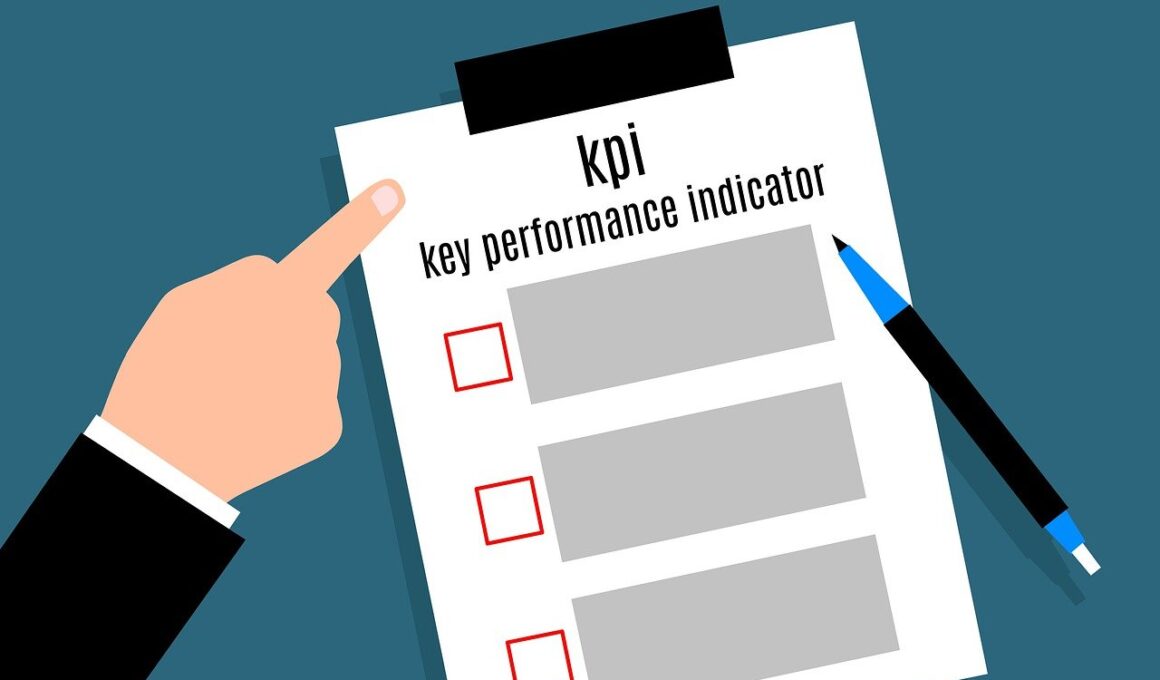Role of Standard Costing in Performance Measurement Systems
Standard costing plays a crucial role in performance measurement systems, providing benchmarks against which actual performance can be compared. By establishing standards for costs associated with production, organizations can measure efficiency, performance, and effectiveness. This approach helps management to identify variances between expected and actual costs, allowing for more informed decision-making. Moreover, performance measurement using standard costs aids in boosting accountability. Employees understand what is expected in terms of cost controls. Furthermore, it gives them a clearer picture of their contribution to the organizational goals. Standard costing also enhances internal controls and financial performance analysis. By implementing consistent performance measures, companies can easily identify areas requiring improvement. They can utilize this information to devise strategies for cost reduction and increased profitability. Beyond internal uses, standard costing aids external stakeholders in understanding a company’s financial health. Investors and analysts frequently look at standard costs to assess potential investment opportunities and long-term viability. Thus, standard costing serves a dual purpose. It offers both a management tool for operational purposes and a key metric for external evaluation, facilitating comprehensive performance assessments.
The significance of standard costing cannot be overstated, particularly in industries with variable cost structures. Organizations in such sectors benefit from standard costing as it enables them to develop more stable pricing strategies. By analyzing variances, they can adjust pricing based on actual costs incurred and market demands. This adaptability is essential for maintaining competitiveness in fluctuating market environments. Furthermore, standard costing allows businesses to forecast more accurately. By reviewing historical data and applying standard costs, they can predict budget requirements for future projects, ensuring resource allocation is efficient. A thorough understanding of potential cost overruns or savings can greatly influence strategic planning. Implementing standard costing also fosters a proactive culture within teams. Employees are encouraged to propose improvements to processes and cost management when they have clear targets. This collaboration can lead to innovative solutions that benefit the entire organization. Additionally, through regular reviews of performance against these standards, companies can improve training and support systems. Investing in employee development becomes more effective as it is aligned with performance measurement goals based on clear expectations. In this way, standard costing promotes a culture of continuous improvement across all organizational levels.
Bridge Between Accounting and Management
Standard costing serves as a bridge between accounting and management, facilitating communication and alignment of organizational goals. In a performance measurement system, the information generated by standard costing streams highlights discrepancies that require management’s attention. This is crucial for both operational efficiency and strategic decision-making. It allows management to translate financial data into actionable strategies. Consequently, managers can identify strengths and weaknesses in operational processes while simultaneously motivating their teams to minimize costs. Furthermore, standard costing enhances performance evaluation processes. By providing reliable data for assessing employee contributions, it establishes accountability. Employees can see direct correlations between their efforts and the company’s financial results, encouraging a performance-driven environment. Performance reviews based on concrete data can improve clarity during evaluations. With standard costing, performance measurement transitions from subjective assessments to objective analyses, promoting fairness and transparency in organizational evaluations. Moreover, accurate cost assessments help management teams recognize the impact of their operational decisions. This allows them to adjust strategies responsively, enhancing overall organizational agility. Consequently, the alignment between financial reporting and operational performance becomes seamless, creating a more cohesive understanding of organizational success.
One cannot overlook the role of technology in transforming standard costing practices. The advent of advanced software solutions has revolutionized how organizations manage their costing systems. These tools allow for real-time data analysis, making it easier to identify variances and their underlying causes promptly. Utilities like automated reports and dashboards simplify the tracking of standard costs against actual performance, reducing both time and potential error. With this capability, businesses can react swiftly to emerging trends and issues. Additionally, the integration of data analytics into standard costing processes enhances predictive capabilities, allowing for informed strategic planning. Organizations are now leveraging historical data more effectively to gauge performance, identify cost-saving opportunities, and improve operational efficiencies. Furthermore, technology supports the continuous improvement philosophy associated with standard costing. Predictive analytics enables companies to refine their standards based on actual or expected conditions, thus making the standards more relevant and useful. Investing in technology to enhance standard costing practices ultimately yields a competitive advantage. Companies can identify and mitigate risks faster, creating a proactive rather than reactive management approach, which is essential in today’s fast-paced business environment.
Challenges and Considerations
Despite its numerous benefits, implementing standard costing is not without challenges. Organizations may face resistance from employees who perceive standard costing as an additional bureaucratic burden. It is essential that management addresses these concerns early and openly, showcasing the broader organizational benefits of effective cost management. Communicating the value of standard costing within the framework of performance measurement can create buy-in from all levels of the organization. Another challenge pertains to the accuracy of data input. If the data used to set standards is flawed, it can lead to misleading results, resulting in misguided decision-making. Therefore, regular audits and updates of cost data are vital. Businesses must ensure that their standard cost systems are continuously reviewed and refined to reflect real-time market conditions. Moreover, the dynamic nature of industries means that standards quickly become outdated. Companies should establish robust processes for reviewing and updating standards. Achieving this requires commitment from management and effective communication channels to engage employees in the revision processes. Developing a culture that embraces change and improvement is fundamental to overcoming these challenges.
Standard costing also finds its way into strategic management and planning. Organizations utilize standard costs to assess the cost implications of various strategic options. For example, when considering new product lines or market expansions, organizations can refer to standard costing data to project potential profitability and investment returns. This allows companies to make informed decisions regarding resource allocation and prioritization of strategic initiatives. Moreover, standard costing informs pricing strategies by enabling businesses to determine the most profitable pricing frameworks based on cost analysis. Organizations can establish a competitive advantage by understanding how their costs relate to their pricing. Additionally, standard costing aids in budgeting processes. By using standard costs to forecast future expenses, businesses ensure more accurate and realistic budgets. This precise forecasting plays an essential role in allocating resources appropriately while ensuring financial discipline across the organization. It fosters accountability, as departments are held responsible for adhering to established budgets. Through effective budgetary controls and standard costing practices aligned with performance measurement, organizations can enhance overall financial performance and accountability. Therefore, standard costing is not merely an accounting tool but an integral part of strategic decision-making.
Conclusion
In conclusion, the role of standard costing in performance measurement systems is pivotal in today’s competitive business landscape. It provides a structured approach to evaluate performance, ensuring that organizations can maintain financial health and operational efficiency. By establishing clear benchmarks, standard costing aids in identifying variances and focusing management attention where it’s needed most. This enables organizations to cultivate a culture of continuous improvement and accountability among employees. Furthermore, as businesses evolve, the integration of technology with standard costing practices will only enhance their effectiveness. Companies that leverage data-driven decisions will likely enjoy a competitive advantage in the market. Moreover, addressing the challenges associated with standard costing implementation will be vital for maximizing its benefits. Organizations must build a culture open to change and improvement to overcome resistance from employees and ensure data accuracy. In doing so, companies will not only enhance their performance measurement capabilities but also drive their strategic planning initiatives. Ultimately, standard costing forms a cornerstone for achieving operational excellence and can significantly contribute to long-term organizational success.
In summary, integrating standard costing into performance measurement systems provides organizations with a strategic advantage. This methodology instills a focus on efficiency, accountability, and informed decision-making across all levels. Standards set expectations for performance while allowing businesses to adapt to changing market conditions. Standard costing can lead to enhanced financial performance and a culture of continuous improvement while providing a clearer path to achieving organizational goals. By effectively incorporating technology into standard costing practices and managing related challenges, businesses can ensure they remain competitive and responsive to their environments. In a world where data-driven decisions are paramount, organizations must prioritize refining their costing practices to harness the full potential of standard costing. Thus, by investing in robust standard costing systems, companies can position themselves for sustainable growth and success.


